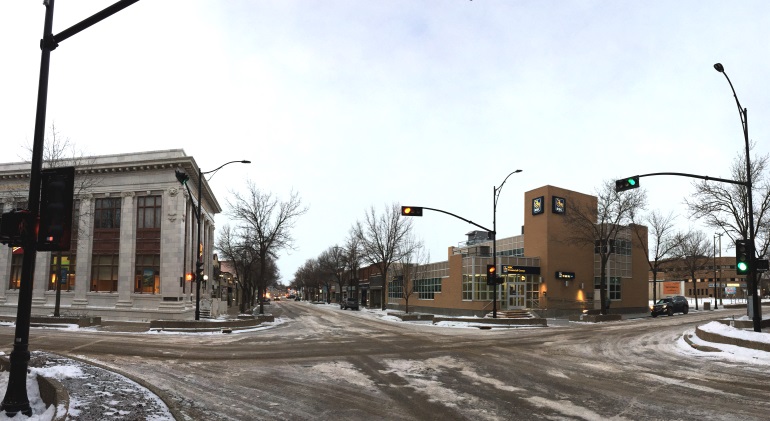Weyburn's downtown core is looking a little brighter today. Installation is complete for the new LED traffic signal lights at the intersection of Souris Avenue and Third Street.
In late summer, the City of Weyburn installed new LED street lights through the downtown core. There was a delay, however, for the traffic lights, due to the originals being too short and unable to extend as far as needed over the planters on each corner.
“The arms were a little bit shorter than needed, so we ordered an extension for the arms, to get us into the driving lane,” explained Engineering Director for the City of Weyburn, Nader Keshta.
Keshta said there are some obvious perks to having the new lights installed.
“It’s more brighter, it’s bigger in size, so it’s more appealing as it is more visible for the public, for the drivers,” he explained. “The LED lights last probably five times longer than the high-pressure sodium lights.”
While the area was blocked off for most of the past two days, Keshta noted the City aimed to minimize disruptions for the businesses in the downtown core.
“We tried to minimize the interception for businesses in downtown through the lifespan of the project,” he said. “So it was minimum, and I think it went well overall.”
He expressed thanks for the co-operation of the businesses downtown, as the streets in the core were blocked off throughout the installation of the lights.

LED, which stands for light-emitting diode, burns about five times as long as high-pressure sodium street lights, at about 100,000 hours. The City chose to switch to LED to save money due to the longevity of the bulbs, with fewer LED bulbs needing to be purchased as fewer replacements will be required, reducing labour hours in the long run.
The LED lights are expected to reduce energy consumption by 50 per cent, while being significantly brighter. The smart lights also have the capability of being dimmed by 60 per cent, as needed, and allows for monitoring consumption.
During its lifespan, an HPS will experience lumen depreciation – or loss of brightness – much earlier and more quickly than an LED of comparable light output. LEDs have also been shown to double driver peripheral vision and increase brake reaction time by 25 per cent.














